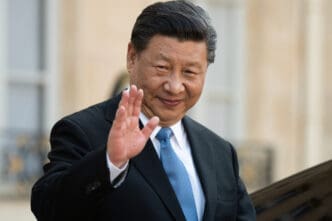The escalating trade tensions initiated by the United States have reached unprecedented levels, as recent developments reveal. Following the introduction of extensive “reciprocal” tariffs by the current administration, China has imposed a retaliatory 34% tariff on all U.S. products, effective April 10. This move has caused tumult in global stock markets, with the S&P 500 experiencing its worst decline since the upheaval caused by the COVID-19 pandemic in 2020.
Economists have raised concerns that these tariffs could lead to increased prices for everyday consumer goods, affecting areas such as grocery shopping and automotive repairs. As businesses grapple with higher costs, there are warnings of slowed hiring, potential layoffs, and reduced incomes, which could impair economic growth and exacerbate inequality worldwide.
Despite these concerns, the administration remains steadfast in its tariff policy, asserting that these measures will attract significant investment to the U.S. while criticizing the retaliatory actions of other nations.
Overview of Recent Tariffs
Since assuming office, the administration has implemented various rounds of tariffs targeting specific countries and products, with the aim of revitalizing U.S. manufacturing and safeguarding domestic industries. The latest measures, described as “reciprocal” tariffs, are the most extensive to date, affecting nearly all U.S. trading partners. The policy establishes a minimum tariff of 10%, with higher rates for nations with trade surpluses with the U.S.
These increased tariffs, reaching up to 50%, are particularly significant for smaller economies with limited trade ties to the U.S. Noteworthy examples include a 20% tariff on European Union imports, 25% on South Korea, 24% on Japan, and 32% on Taiwan. Additionally, the previously imposed 34% tariff on China builds on earlier 20% levies.
China’s Response
In retaliation, China has announced further measures alongside the 34% tariff on U.S. goods. These include enhanced export controls on rare earth materials critical for high-tech products, such as computer chips and electric vehicle batteries. Additionally, China has suspended imports from two U.S. poultry producers and initiated a lawsuit with the World Trade Organization, accusing the U.S. of destabilizing the global trade order.
China has also expanded its list of companies subject to trade sanctions and export controls. This ongoing trade conflict is not new, as the two nations have exchanged numerous tariffs both during and after the previous administration.
Market Reactions
The financial markets have been severely impacted by these trade developments, with a notable downturn witnessed recently. Wall Street experienced one of its most significant crises since the 2020 COVID-19 crash, with the S&P 500 dropping 5.7% and the Dow Jones Industrial Average falling over 2,000 points. The Nasdaq Composite also fell by 5.5%, while European markets saw declines of approximately 4%.
The price of crude oil declined to its lowest since 2021, and other essential materials like copper also saw price drops, driven by concerns over the trade war’s potential to weaken the global economy.
Official Stances and Reactions
Despite the market turmoil, the administration remains committed to its trade policies, viewing them as necessary to incentivize companies to relocate operations to the U.S. The President has assured the public that the situation is progressing well and expects the tariffs to ultimately benefit the market and the nation.
While the administration defends its tariffs, others, including the Federal Reserve Chair, have cautioned against potential inflationary effects resulting from the broad scope of these tariffs. The potential for both short- and long-term inflation remains a significant concern.
The Societal Shift
- Cost of Living: With increased tariffs, consumers may face higher prices for everyday items, impacting household budgets.
- Economic Growth: The potential for slowed hiring and layoffs could hinder economic growth and increase unemployment rates.
- Inflation Concerns: The broad scope of tariffs may contribute to inflation, affecting the purchasing power of consumers.
- Global Trade Stability: Ongoing trade tensions could disrupt global trade stability, affecting international relations and economic collaborations.
- Investment Decisions: Companies may reconsider their investment strategies and supply chains in response to increased trade barriers and costs.







